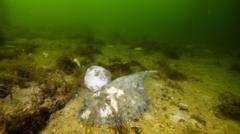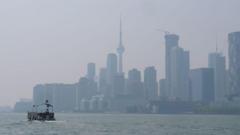Maryland has successfully met its ambitious conservation target to protect 30% of its land by 2030, outpacing nine other states in the initiative and setting its sights higher for the future.
Maryland Leads the Way in Land Conservation with New Environmental Goals

Maryland Leads the Way in Land Conservation with New Environmental Goals
Maryland achieves stunning conservation milestone ahead of its peers, preserving a significant portion of its natural landscape.
The state of Maryland has made impressive strides in land conservation, achieving its ambitious goal of protecting nearly 1.9 million acres—representing 30% of its land—six years ahead of the 2030 deadline. This remarkable feat is part of a global initiative known as “30 by 30,” aimed at safeguarding 30% of the Earth’s lands and waters by the year 2030. Governor Wes Moore announced this achievement, highlighting areas such as the 75,000-acre Chesapeake Forest Lands, which not only shelter formidable species like the bald eagle and the Delmarva fox squirrel but also include diverse habitats such as fish hatcheries, shorelines, and farmland.
With its existing conservation plans accomplished, Maryland is now setting its sights on a new target—to conserve 40% of its land by 2040. The Nickerson family from Kent County, whose conserved property known as King’s Ridge comprises about 350 acres, exemplifies the impact of these efforts. This particular land not only enhances biodiversity but also combats climate change, minimizes erosion, and bolsters water quality through sustainable agricultural practices. Maryland’s proactive approach to environmental challenges reflects the potential for local solutions that can inspire other states as they endeavor to tackle similar ecological responsibilities.
Such initiatives exemplify how states can be at the forefront of environmental conservation while promoting sustainable farming and wildlife preservation, showcasing a model for others to follow in future conservation efforts.
With its existing conservation plans accomplished, Maryland is now setting its sights on a new target—to conserve 40% of its land by 2040. The Nickerson family from Kent County, whose conserved property known as King’s Ridge comprises about 350 acres, exemplifies the impact of these efforts. This particular land not only enhances biodiversity but also combats climate change, minimizes erosion, and bolsters water quality through sustainable agricultural practices. Maryland’s proactive approach to environmental challenges reflects the potential for local solutions that can inspire other states as they endeavor to tackle similar ecological responsibilities.
Such initiatives exemplify how states can be at the forefront of environmental conservation while promoting sustainable farming and wildlife preservation, showcasing a model for others to follow in future conservation efforts.





















